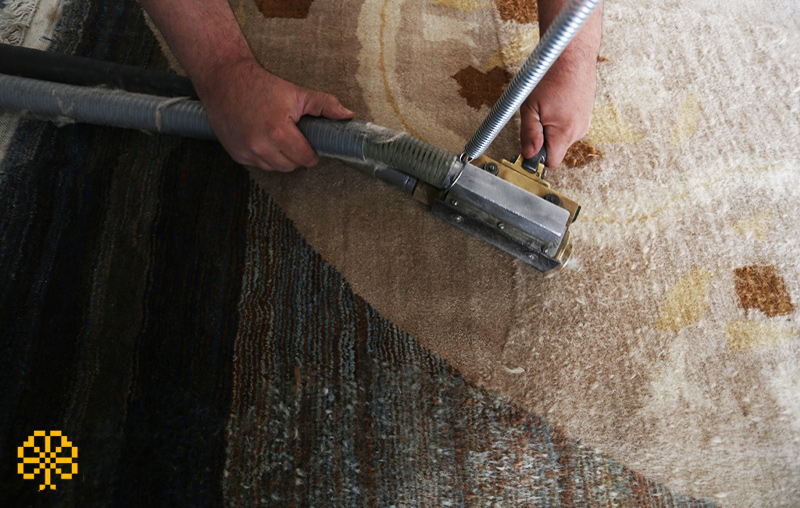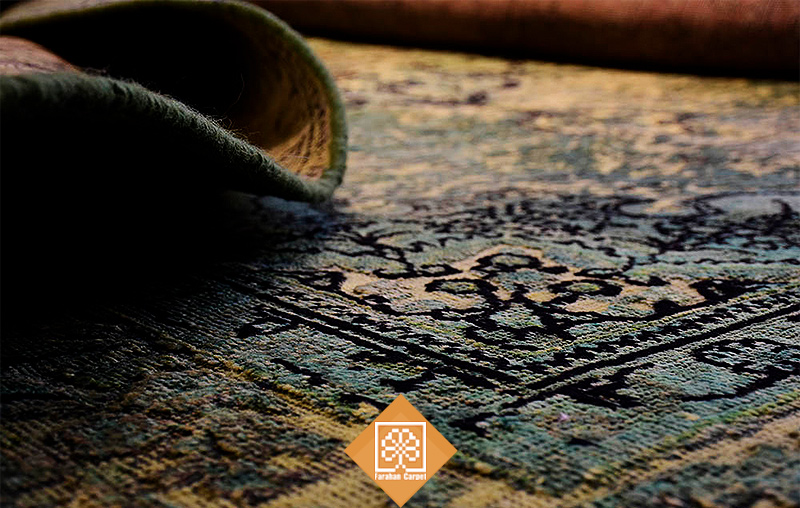The steps of converting a raw handwoven carpet to a finished one (zero to 100)

How does a raw handwoven carpet become a beautiful and professional carpet for sale? Maybe it has happened to you that you have seen hand-woven carpets that look very different from the hand-woven carpets that are sold in the markets, and you have wondered what is the reason for all these differences?
In this article from Farahan Carpet, we are going to examine step by step the process that a raw handwoven carpet goes through to become a beautiful carpet for supply to the customer.
The process of turning a raw handwoven carpet into a shop carpet
Pay attention, we do not intend to go into the steps of weaving a hand-woven carpet here, because we have already reviewed this issue in this article (how to weave a hand-woven carpet) and here we will review the steps that a raw hand-woven carpet goes through after being woven. We will study Prepare for Sale.
After this initial explanation, let’s go to check these steps:
1. Review of raw handwoven carpet
In the first step, the quality of the raw hand-woven carpet is examined, and by measuring its dimensions and checking this, the proportion of its sides is checked so that the carpet is not crooked.
If the carpet is crooked, it should be repaired by professional craftsmen. Moving the knots is a method that can be used to fix the skewness and asymmetry of the carpet to a large extent. In this way, the roots and knots are opened and the appearance of the carpet is modified to increase the value of the carpet in addition to its beauty.
2. Double knotting of the roots
If you don’t know what the origin of raw handwoven carpet is, it should be said; The root is actually the part of the carpet that is white in 90% of the cases and is located on both sides of the width of the carpet and is along the warp and weft of the carpet.
After the carpet is examined in the first stage, the hand-woven carpet is handed over to a master weaver who will prevent the roots from unraveling by tying the roots twice and extend their life.
Double knotting of the roots, as you can tell from its name, is that a row of carpet roots is woven together with 2 knots, the procedure is as follows:
The master craftsman divides the carpet roots into equal groups (and as much as possible with the same number of root threads) and then holds the first group with two index fingers and thumb and ties it with the thread that is used to create two knots He takes it and ties the first knot with his middle finger. To create the second node, he does the same thing and does it on the same branch and repeats this work in the same way until the final root branch.
3. Raw handmade carpet finishing
You have probably heard the term carpet polishing a lot in the carpet weaving industry. Polishing is actually a process that is carried out with a special machine on the raw handwoven carpet to remove the extra piles from the surface of the carpet.
Removing extra and long piles from the hand-woven carpet not only makes the carpet look more uniform and smooth, but also makes the patterns and designs used in the texture of the carpet look much more beautiful and clear.
Of course, it is necessary to point out that in the past and sometimes nowadays in some cases, carpet finishing is also done by hand and scissors, which is not recommended at all, because if the master craftsman makes a mistake in the process of cutting, it will cause the carpet to lose its value. to lose himself and it is an irreparable damage.
Read more: used handwoven carpets and 3 types of carpets that are worth buying
4. Washing and drying the carpet
It may be surprising to you why the new carpet you buy should be washed once!
In general, the raw hand-woven carpet gets contaminated and dirty after actions such as payment, double-knot weaving, and transportation during this period, which needs to be washed once before it reaches the customer.
On the other hand, this carpet washing, which is done in carpet cleaners, is done using special principles and special softening materials, which increases the softness of the carpet. Of course, make sure that carpet weaving specialty brands such as Farhan Carpets also have a carpet washing facility in their collection, and therefore they do not need to send the carpet to a carpet cleaner, and they do this inside the workshop.
After careful washing, the carpet is spread on special straps to dry and prepare for the next steps.
But the process that is done before washing the carpet for some hand-woven carpets is carpet folding. Carpet drying is a method that is done by using the direct heat of fire by air and small gases to roast carpets and handwoven carpets.
In specialized carpet weaving workshops, after the carpet is woven, a series of piles and small hairs are left on the newly woven carpet, which are inserted into the carpet with a very low heat device and momentarily by experts, until these piles, which are caused by static electricity They are stuck to the carpet, burn and disappear. Please note that this process is done before washing the carpet.
5. Cutting and embroidering raw handmade carpet
Raw handwoven carpets are often woven in pairs. This issue is seen more in Tabriz handwoven carpets. In fact, Tabriz carpets are woven in such a way that two carpets are woven at the same time by the same weaver and in the same place with the same design and color. These two carpets, Tamala and Jaza, are identical to each other.
Therefore, after the steps mentioned in the previous sections, the carpets are separated from the designated area using professional scissors and are prepared for leather embroidery.
Shirazeh carpet, from a specialized point of view, means using 3 to 5 strands of the same color on the side of the carpet, which is wrapped around 2 to 6 pieces of chela on the side of the carpet. But if we want to put it simply, we should say: “longitudinal edges of the carpet” that you will see if you take a simple look at the sides of the carpets in your house; In fact, a stitch that is attached to the side of the carpet and is made by a thick thread and a special needle in the longitudinal edge of the carpet.
If you pay attention to the 2nd part of this article, you will realize that double knotting was used for transverse roots and shirazeh embroidery for longitudinal roots!
Shirazeh weaving is used to cover the wefts on the side of the carpet and to organize the sides and restrain the threads on the side of the carpet. This work is done by a professional craftsman, which increases the life of the carpet.
After these steps and processes, the raw hand-woven carpet becomes a carpet that is sent to the customer, and it is because of these actions that you compare the hand-woven carpet woven by the weaver with the hand-woven carpets in stores and markets. have.
In this article, we have reviewed the most important and main steps that a raw handwoven carpet goes through to become a professional carpet. Share your comments with us.






